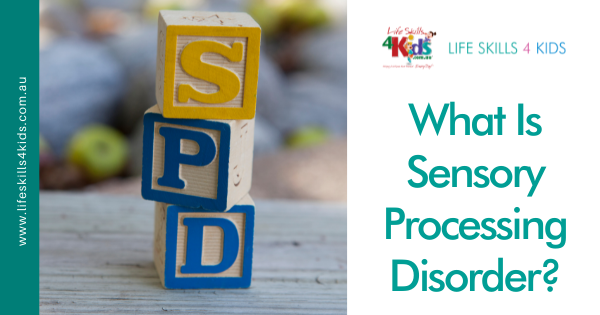
In some toddlers, or even older children, parents may notice an unusual dislike to noise or light, or a clumsy attitude or distressful reaction during basic self-care tasks like tying their shoe laces or brushing teeth.
However, it can be more disturbing in situations where their children start exhibiting extreme behaviors. These might include unusual high or low pain thresholds, throwing tantrums if they get wet or touch textured objects, poor body balancing or even crashing into walls or people for no apparent reason.
These and a lot more other atypical behaviors may reflect an issue termed as sensory processing disorder (SPD). It is a complex neurological state that damages the functional abilities of 1 in 20 children (as per a survey in USA).
How does the processing of sensory information occur?
To understand the problem well, let’s get to know the process of a normal working brain. Our central nervous system receives input from body parts as well as from the surroundings. It acts like a computer system, where it starts functioning according to the input it receives. In a human body, sensory information (like hearing, vision, taste, smell, touch, and movement) provides the input to the brain which is then interpreted in terms of movement, cognition (thinking), emotional build up and learning.

In case of Sensory Processing Disorder, it is hypothesised that the brain does not compile the sensory impulses in a way that gives the child specific information for the appropriate response. As a result, learning can be difficult and children may feel uncomfortable, or have difficulty coping with the stress of daily organisational demands. It’s like the traffic controlling signals are out of order, and the traffic flow is coming from all directions, so that you don’t know how to make sense of the chaos.

Each to their Own
Just the way every person is different from the other, the appearance of Sensory Processing Disorder is different for each child child. It may affect only the sense – such as taste or touch – or it can impact multiple senses altogether in a far more challenging scenario. For instance, one child may react intensely to bright colors while another may over-respond to loud sounds. Physical ailments like impairments or aching of the joints and muscles have also been observed, affecting the body positons and motor skills function.

Children with Sensory Processing Disorder may express sensations either or in a combination of hypersensitivity (sensory avoidance) or hyposensitivity (sensory seeker). They may possess delayed communication and social skills and so express strong emotions which are generally termed as ‘melt downs’ or entering the ‘black crash zone’ on the Just Right Kids self-regulation model. What could be the reason?
In recent years, researchers are spending much time learning about this condition, however, the precise cause for Sensory Processing Disorder is still unknown. One of the potential causes being researched is genetics. Not only the families with autism are at higher risk for developing Sensory Processing Disorder, but boys are also more prone to have this condition than girls.
Diagnosis and Treatment
Many healthcare professionals do not have a great awareness of Sensory Processing Disorder from other neurological/muscular dysfunctions, which results in delayed diagnosis and treatment. Untreated Sensory Processing Disorder that penetrates into adulthood can affect a person’s capacity to succeed in personal, professional and social environments. A sensory checklist covering responses to all types of input is a great way to help parents determine if their child’s behavior comes under sensory issues.
Although diagnosis imparts a great sense of relief in parents as they finally get to “name” the condition their children are going through, but this alone is not the solution. It should be taken as a vent for getting the much needed help.
Children with Sensory Processing Disorder can be effectively treated by a combination of physical and occupational therapy with a major focus on analytical activities strengthening their ability to handle sensory impulses appropriately. Gradually, the child starts exhibiting positive responses towards the stimuli and become better in social surroundings. From an occupational therapy perspective, it can also reveal what kind of medical/psychological interventions are required or just by changing a few factors in their environment can make a difference.
It is important to understand that children who experience Sensory Processing Disorder may be experiencing a neurological ‘panic’ or ‘fight, fright or flight’ stress response to everyday situations, which the rest of us take for granted.
Empathy is extremely important! Spend time and get to know your child’s sensory clues and cues and understand that they might just be trying to do their best to cope in an environment and a world that is confusing, frightening, stressful and causing anxiety.
Hungry for more information?
- Learn about sensory processing disorder HERE
- The Everything Parent’s Guide To Sensory Processing Disorder : The Information and Treatment Options You Need to Help Your Child with SPD
- I’m Not Weird, I Have Sensory Processing Disorder (SPD) : Alexandra’s Journey (2nd Edition)
- Creating a sensory corner at home
- Identifying children with sensory difficulties in class

